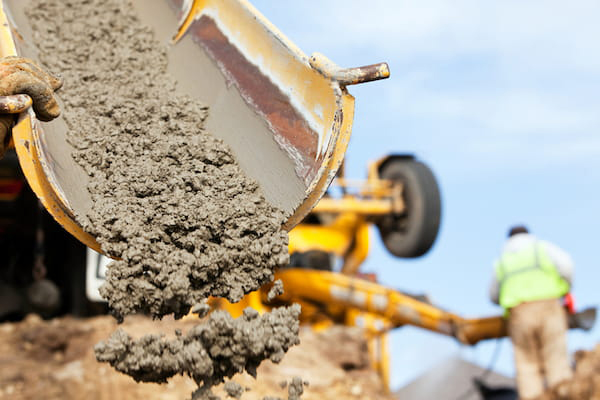Coal Combustion Residuals
 |
Overview
EPA's Office of Enforcement and Compliance Assurance (OECA) established six priority areas as the National Enforcement and Compliance Initiatives (NECIs) for Fiscal Years 2024-2027. Among those six priorities is protecting communities from coal ash contamination. Examples of disasters caused by improper coal ash management include large spills near Kingston, TN and Eden, NC which caused widespread environmental and economic damage to nearby waterways and properties.
In 2022, coal-fired electric utilities generated almost 80 million tons of coal combustion residuals, more commonly known as coal ash. Coal ash contains contaminants such as mercury, cadmium, chromium, and arsenic, which are associated with cancer and other serious health effects. There are approximately 300 regulated CCR facilities nationwide, comprised of approximately 775 coal ash units (240 landfills and 535 surface impoundments).
To advance OECA's initiative, this section of the Portal highlights the beneficial use of coal combustion residuals (CCRs), which is an alternative to risky disposal options, such as landfills and impoundments. An example of CCR reuse is incorporation of the material in concrete products. Based on the most recent data available (2022), less than 50% of total CCRs generated are beneficially reused. This points to a potential opportunity to better protect communities from coal ash contamination.
Beneficial reuse of CCR has environmental, economic, and product benefits including:
- Environmental benefits such as reduced greenhouse gas emissions, reduced need for disposing in landfills, and reduced use of other materials.
- Economic benefits such as reduced costs associated with coal ash disposal, increased revenue from the sale of coal ash, and savings from using coal ash in place of other, more costly materials.
- Product benefits such as improved strength, durability, and workability of materials.
Regulations
The Federal EPA administers the CCR permit program for the majority of the United States. However, state-level permitting authority is increasingly being adopted, particularly under the Trump administration's EPA. For additional information regarding CCR permitting, please click here. |
To address the risks from improper disposal and discharge of coal ash, EPA established national rules for coal ash disposal (Disposal of Coal Combustion Residuals from Electric Utilities). The CCR rule (and subsequent amendments) established national regulations to provide a comprehensive set of requirements for the safe disposal of CCRs. These regulations address the risks from coal ash disposal -- leaking of contaminants into ground water, blowing of contaminants into the air as dust, and the catastrophic failure of coal ash surface impoundments.
In addition to addressing coal ash disposal risks, the CCR rule supports the responsible recycling of CCRs by distinguishing beneficial use from disposal. This is an important distinction because coal ash being beneficially used is excluded from federal regulation making state environmental agencies the primary regulatory body.
The federal definition of CCR beneficial use is comprised of four criteria:
- the CCR must provide a functional benefit;
- the CCR must substitute for the use of a virgin material;
- the CCR meets product specifications and/or design standards; and
- when unencapsulated use of CCR involves placement on the land of 12,400 tons or more in non-roadway applications, the user must demonstrate and provide documentation concerning environmental releases to ground water, etc.
A use of CCR that does not meet the definition and criteria of a beneficial use is disposal.
Beneficial Reuse Options
Common means of CCR beneficial use are divided into two categories:
- Encapsulated Uses of CCR. The two largest encapsulated uses are fly ash used in "concrete/concrete products/grout" and flue gas desulfurization (FGD) gypsum used in "gypsum panel products." The American Coal Ash Association (ACAA) estimates that of the approximately 35.2 million tons of CCR that were beneficially used in 2022, 12.6 million were used in "concrete/concrete products/grout" and 11.7 million tons in "gypsum panel products."
- Unencapsulated Beneficial Use. Unencapsulated uses of coal ash are those where coal ash is used in a loose particulate, sludge, or other unbound form. The American Coal Ash Association reported that in 2022, about 4.3 million tons of CCR were beneficially used in unencapsulated uses. The largest unencapsulated use was CCR used in "structural fills/embankments" (two million tons). Other known unencapsulated uses include agricultural use of flue gas desulfurization (FGD) gypsum, soil modification, and loose aggregate.
Additional information regarding beneficial use of CCR can be found on the ACAA website.
State Information
The following states have posted regulatory, policy or guidance information on their websites concerning coal combustion residuals. Please email us if you are aware of applicable information for your state not listed here and we will update the list accordingly.
AK |
CA |
CT |
DE |
||||||
HI |
ID |
IA |
KS |
LA |
|||||
MS |
MO |
MT |
NV |
||||||
NM |
ND |
OH |
OK |
OR |
RI |
SC |
|||
SD |
UT |
VT |
VA |
WA |
WV |
WI |
WY |
More Resources
Frequent Questions about the Beneficial Use of Coal Ash. EPA received many questions on implementing the 2015 CCR disposal rule. The Agency is developing and posting responses to these questions.
Beneficial Use of Coal Combustion Residuals (CCRs) Survey Report. The Association of State and Territorial Solid Waste Management Officials (ASTSWMO) Beneficial Use Task Force (BUTF) updated the information it had on current State regulations regarding the beneficial use of CCRs via a survey. Forty-six States responded to the survey conducted October 2011 through March 2012. ASTSWMO had previously gathered information from the States regarding CCRs and that is included the ASTSWMO Beneficial Use Survey Report of 2006.
American Coal Ash Association. The ACAA provides a wealth on information regarding CCR beneficial use.
